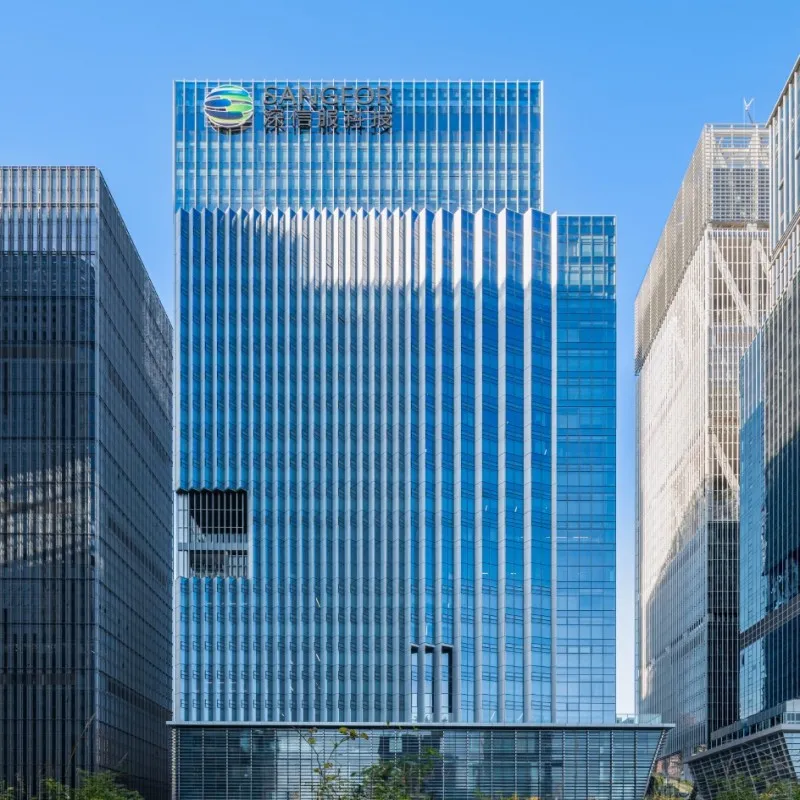Single Vendor SASE (Secure Access Service Edge) is a comprehensive, unified solution where a single vendor provides all the networking and security capabilities required for an organization’s digital infrastructure. This approach consolidates multiple network and security functions, such as SD-WAN, Secure Web Gateway (SWG), Cloud Access Security Broker (CASB), Firewall-as-a-Service (FWaaS), and Zero Trust Network Access (ZTNA), into one cloud-native service. Single Vendor SASE aims to simplify the complexity often associated with managing multiple vendors and solutions. By integrating these functions into a single platform, it offers a cohesive and streamlined approach to managing an organization's networking and security needs. This not only enhances security but also reduces operational complexity and costs. The unified management console allows for consistent policy enforcement across all network edges, ensuring that security configurations remain standardized and adaptable to evolving threats. Additionally, the cloud-native architecture ensures scalability and flexibility, making it easier for organizations to adapt to changing business requirements.

Why Single Vendor SASE Is Important?
Single Vendor SASE has gained significant traction due to its ability to simplify complex IT environments. Traditional multi-vendor solutions often lead to fragmented traffic management and a disjointed security posture. In contrast, Single Vendor SASE offers a cohesive architecture that enhances security, reduces operational complexity, and lowers costs. By consolidating networking and security into a single platform, organizations can achieve more efficient management and better overall network security. This unified approach ensures consistent policy enforcement across all network edges, reduces the potential for human error, and improves operational efficiency. Additionally, the cloud-native architecture of Single Vendor SASE allows for scalable and flexible solutions that can adapt to changing business needs, ensuring long-term viability and cost savings。 In today's digital landscape, organizations are increasingly adopting cloud services and remote work models, which necessitate a more flexible and secure networking solution. Single Vendor SASE addresses these needs by providing a unified platform that integrates essential networking and security functions such as SD-WAN, Secure Web Gateway (SWG), Cloud Access Security Broker (CASB), Firewall-as-a-Service (FWaaS), and Zero Trust Network Access (ZTNA). This integration not only simplifies management but also enhances security by ensuring that all connections are inspected and secured, regardless of location or device。 Moreover, Single Vendor SASE solutions are designed to support remote and distributed workforces, ensuring that users have consistent and secure access to cloud resources. This is particularly important in the context of increasing cyber threats, where traditional perimeter-based security models are no longer sufficient. By adopting a zero-trust approach, Single Vendor SASE ensures that only verified users and devices gain access to resources, thereby mitigating the risk of unauthorized intrusions。
How It Works
Single Vendor SASE operates by integrating various network and security functions into a unified cloud service. This service is delivered through Points of Presence (PoPs) that are strategically located around the world to ensure low latency and high performance. The platform uses a single management console to enforce consistent security policies across all network edges, ensuring that security configurations remain standardized and adaptable to evolving threats. This unified approach allows for seamless integration of technologies and streamlined workflows, reducing the need for multiple management consoles and improving overall operational efficiency. The integration of key components such as SD-WAN, Secure Web Gateway (SWG), Cloud Access Security Broker (CASB), Firewall-as-a-Service (FWaaS), and Zero Trust Network Access (ZTNA) into a single, cohesive solution provides comprehensive security and optimized network performance. Event data from all functions is stored in a single data lake, providing shared context which leads to better visibility and security efficacy. Administration, monitoring, and troubleshooting are all done from a single management application, which improves efficiency and compliance. This centralized management ensures that policies are consistently applied and easily updated, reducing the potential for human error and improving overall security posture.
Benefits of Single Vendor SASE
Single Vendor SASE offers a range of benefits that make it an attractive solution for organizations looking to streamline their IT infrastructure and enhance their security posture. By consolidating networking and security functions into a unified cloud service, Single Vendor SASE provides a comprehensive solution that addresses the challenges of modern IT environments. Here are the key benefits:
Simplified Management
Centralized management through a single console reduces complexity and improves administrative efficiency. IT teams can configure, monitor, and troubleshoot all networking and security functions from one place, saving time and reducing the potential for errors. This streamlined approach also simplifies training and onboarding for new staff, further enhancing operational efficiency.
Enhanced Security
Consolidation of security functions leads to a more robust security posture, with consistent policy enforcement across all network edges. Advanced security features such as Zero Trust Network Access (ZTNA) and Firewall-as-a-Service (FWaaS) ensure that only verified users and devices gain access to resources, reducing the risk of unauthorized access and data breaches. The unified security framework also provides better visibility into potential threats, enabling quicker response times.
Improved Performance
Traffic is optimized through the nearest Point of Presence (PoP), reducing latency and improving user experience. This ensures that users, whether in the office or working remotely, have seamless access to cloud applications and services. The cloud-native architecture of Single Vendor SASE allows for elastic scaling, ensuring that performance remains high even during peak usage periods.
Cost Efficiency
Reduced operational costs and potential discounts from a single vendor contribute to a lower total cost of ownership (TCO). By consolidating multiple solutions into one, organizations can eliminate the need for multiple vendor contracts and reduce the overhead associated with managing disparate systems. This shift from a capital expenditure (CAPEX) to an operational expenditure (OPEX) model also provides greater budget predictability.
Future-Readiness
Single Vendor SASE solutions are designed to scale and adapt to evolving business needs, ensuring long-term viability. As organizations continue to adopt cloud services and embrace digital transformation, the flexibility and scalability of Single Vendor SASE make it an ideal solution for meeting future challenges. The platform's ability to integrate new technologies and services ensures that it remains relevant and effective in a rapidly changing IT landscape.
Challenges of Single Vendor SASE
Single Vendor SASE, despite its numerous benefits, also presents several challenges that organizations should consider before adopting this solution.
Vendor Lock-In
One of the primary concerns is vendor lock-in. When an organization commits to a single vendor for all its networking and security needs, it may face difficulties if it needs to switch vendors in the future. This can be due to changes in business requirements, dissatisfaction with the current vendor's service, or the need to integrate with other solutions that the current vendor does not support. Vendor lock-in can limit flexibility and increase the complexity and cost of transitioning to a different solution.
Initial Integration Complexity
Although Single Vendor SASE is designed to simplify operations in the long run, the initial setup and integration process can be complex. Organizations need to migrate existing systems and configurations to the new platform, which may require significant time and resources. This includes integrating with existing IT infrastructure, ensuring compatibility with current systems, and training staff on the new platform. The complexity of the initial integration can be a barrier for some organizations, especially those with large and complex IT environments.
Feature Limitations
Another challenge is the potential for feature limitations. While Single Vendor SASE offers a comprehensive set of networking and security functions, it may not cover all the specific requirements of every organization. Some organizations may have unique needs or specialized use cases that are not fully addressed by a single vendor's solution. This can lead to gaps in functionality or the need for additional, third-party solutions to fill those gaps, which can complicate the overall IT environment.
Cost Considerations
While Single Vendor SASE can reduce operational costs in the long term, the initial investment and ongoing subscription fees can be significant. Organizations need to carefully evaluate the total cost of ownership (TCO) to ensure that the benefits outweigh the costs. Additionally, the cost structure of a single vendor solution may not always align with the budgeting and procurement processes of some organizations.
Scalability and Performance
Ensuring that the Single Vendor SASE solution can scale to meet growing demands and maintain high performance under varying loads is crucial. Organizations need to verify that the vendor's infrastructure and service offerings can handle their current and future needs without degradation in performance.
Conclusion
Single Vendor SASE offers a comprehensive and unified approach to managing an organization’s networking and security needs. By consolidating multiple functions into a single cloud-native platform, it simplifies operations, enhances security, and reduces costs. This solution is particularly attractive for enterprises seeking to streamline their digital infrastructure and improve overall IT efficiency. As the market continues to evolve, Single Vendor SASE is poised to become a standard, providing the flexibility and scalability needed to meet future challenges.
Frequently Asked Questions
Single Vendor SASE is a unified solution where a single vendor provides all the networking and security capabilities required for an organization’s digital infrastructure.
It simplifies management, enhances security, improves performance, and reduces costs compared to multi-vendor solutions.
It integrates various network and security functions into a single cloud service, delivered through strategically located PoPs.
Benefits include simplified management, enhanced security, improved performance, cost efficiency, and future-readiness.
Challenges may include vendor lock-in, initial integration complexity, and potential feature limitations.
The market for Single Vendor SASE is growing, with increasing adoption and advancements in technology.
Evaluate your organization’s needs, research potential vendors, and consider a phased approach to implementation.





